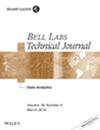基于HEC-RAS的尼泊尔博卡拉Ramghat洪水分析
Q1 Engineering
引用次数: 14
摘要
尼泊尔博卡拉Ramghat地区的洪水是居住在该地区附近的人们每年不得不面对的主要问题。本研究的主要目的是对Ramghat的Seti河进行洪水分析。Ramghat的集水区面积为574.56平方公里。公里。使用ArcGIS,其中海拔5000米以上的面积为52平方公里。公里。海拔3000 m以下面积为356平方公里。公里。本研究利用博卡拉机场和鲁姆勒两个气象站的降水资料进行峰值流量的计算。采用PCJ方法(1996)估算洪峰,并与修正Dicken公式、WECS/DHM方法、Rational方法和Sharma and Adhikari(2004)方法计算的洪峰进行比较。用PCJ方法计算50 a和100 a汛期的洪峰分别为1918 m3/s和2336 m3/s。对这些洪水情况进行了HEC-RAS建模,以确定沿Ramghat的八个横截面的水面剖面。最后,利用地形图和谷歌地球图绘制洪泛区图。据发现,在拉姆加特,50年的洪水可以淹没沿着河岸的三个墓地。最重要的是,人们发现100年的洪峰对住宅建筑也更脆弱。本研究绘制的洪泛平原地图可为政府部门规划、决策、预警系统和灾害风险管理提供参考。此外,还编制了Ramghat出水口断面的分级曲线,可用于今后汛期河流量的估算。本文章由计算机程序翻译,如有差异,请以英文原文为准。
Flood Analysis at Ramghat, Pokhara, Nepal Using HEC-RAS
Flooding in Ramghat area of Pokhara, Nepal is the major problem that has to be faced every year by the people residing nearby the area. Main goal of this study was to conduct the flood analysis of Seti River in Ramghat. Catchment area of the Ramghat was calculated to be 574.56 sq. km. using ArcGIS where the area above 5000 m elevation was 52 sq. km. and area below 3000 m elevation was 356 sq. km. Precipitation data of two meteorological stations, Pokhara airport and Lumle, were used in this research for the calculation of peak discharge. PCJ method (1996) was used to estimate the peak flood and also compared with the peak flood calculated using Modified Dicken's formula, WECS/DHM method, Rational method and Sharma and Adhikari (2004) method. Peak flood values were found to be 1918 m3/s and 2336 m3/s by PCJ method for return period of 50 years and 100 years respectively. The HEC-RAS modelling was performed for these flooding situations to determine the water surface profile along the eight cross-sections of the Ramghat. Finally, the floodplain map was prepared using the topographic map and the Google Earth Map. It was found that 50 years flood in Ramghat could inundate three cemetery shades situated along the river banks. Most importantly, 100 years’ peak flood was found more vulnerable for residential buildings too. The flood plain maps prepared in this study can be used by government authorities for planning, decision making, early warning system and disaster risk management. Additionally, the rating curve was prepared for the outlet section of Ramghat that can be used to estimate the river discharge during flooding in future.
求助全文
通过发布文献求助,成功后即可免费获取论文全文。
去求助
来源期刊

Bell Labs Technical Journal
工程技术-电信学
自引率
0.00%
发文量
0
审稿时长
6-12 weeks
期刊介绍:
The Bell Labs Technical Journal (BLTJ) highlights key research and development activities across Alcatel-Lucent — within Bell Labs, within the company’s CTO organizations, and in cross-functional projects and initiatives. It publishes papers and letters by Alcatel-Lucent researchers, scientists, and engineers and co-authors affiliated with universities, government and corporate research labs, and customer companies. Its aim is to promote progress in communications fields worldwide; Bell Labs innovations enable Alcatel-Lucent to deliver leading products, solutions, and services that meet customers’ mission critical needs.
 求助内容:
求助内容: 应助结果提醒方式:
应助结果提醒方式:


